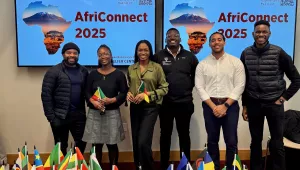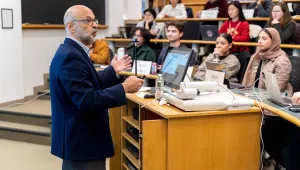
Amanda Sardonis discusses the history of the Noel Kempff Mercado Climate Action Project, which was recognized as the first winner of Harvard Kennedy School's Roy Family Award for Environmental Partnership. Though the project dissolved prematurely due to an unforeseen shift in Bolivia's political landscape, the experience holds valuable lessons that can be applied to other environmental partnerships.
Introduction
The Noel Kempff Mercado Climate Action Project (“NKMCAP”), launched in 1997, was one of the first voluntary avoided deforestation joint implementation projects demonstrating the use of carbon sinks for climate change mitigation, and one of the first to fall under the Reducing Emissions from Deforestation and Degradation (REDD) framework. The Nature Conservancy (TNC) partnered with the local, Bolivian non-profit Fundación Amigos de la Naturaleza (FAN) and recruited three American corporate investors (BP Amoco, American Electric Power, and PacifiCorp) to finance the acquisition of logging rights from timber companies on two million acres of forested land adjacent to the Noel Kempff Mercado National Park in Bolivia, doubling the size of the park. According to the project’s intended design, once logging concessions were purchased, the expanded territory was meant to be protected from environmental degradation and deforestation activities for at least the 30-year project duration. The cessation of activities causing deforestation and degradation would enable the newly protected forest to serve as a carbon sink, providing Verified Emission Reduction (VER) carbon offsets that could be commercialized by the Government of Bolivia and the three corporations financing the project. In addition to this core project objective, NKMCAP would produce a venture company focusing on agro-forestry, enable sustainable microenterprise development, and support local Indigenous communities with technical assistance, various social services, and capacity building efforts. The project garnered the attention of various public figures, including Jane Goodall and former U.S. Vice President Al Gore. However, while the project was intended to span three decades, it, and the underlying partnership, effectively disintegrated within 19 years.
NKMCAP has been studied for niche academic purposes, but has not undergone a comprehensive post-mortem analysis. No one to date has examined what exactly happened to the NKMCAP partnership, and what internal factors (i.e. within the control of project stakeholders) and external factors (i.e. beyond the control of project stakeholders) affected the effectiveness of the project. (Appendix A provides a brief snapshot of some of the previous publications on NKMCAP; these reports and articles served as inputs for a baseline analysis of the case.)
This report examines how NKMCAP failed to live up to its potential, by focusing on three different dimensions of partnership effectiveness: 1) the sustainability of the partnership, 2) the effectiveness of the collaboration process itself, and 3) the achievement of the planned objectives. In terms of its most consequential challenges, NKMCAP experienced intense political upheaval after the election of President Evo Morales, faced disruptive changes in the governance structure, and struggled with stakeholder engagement issues related to internal and external actors.
In its first eight years, NKMCAP managed to reach several noteworthy milestones, including the expansion of the park and verified avoided carbon emissions in excess of one million metric tons. It also advanced a burgeoning body of technical knowledge related to carbon stock management and developed various methodologies necessary for what are now known as REDD+ projects. Notably, the project embraced a range of social impacts in its project design, even though it did not successfully achieve them all. NKMCAP technical assistance did help Indigenous communities living in the project area obtain legal recognition as well as title to their ancestral lands. Lastly, NKMCAP demonstrated a laudable model of international NGO/local non-profit collaboration between TNC and FAN, the latter of which helped to sustain the project even after the initial project partners ended their involvement.
There are several transferrable lessons learned from the challenges faced in NKMCAP that are highly consequential to partnership effectiveness. First, cross-sector partnerships should strive to anticipate and prepare for political and/or legislative change and disruption through broad political engagement tactics. Second, partnerships should create sustainable financing mechanisms capable of outlasting changes in partnership governance. And thirdly, partnerships should prioritize stakeholder engagement throughout disruptions in governance and political leadership to ensure project survivability. NKMCAP can be used as an instructive case to highlight obstacles that impact cross-sector environmental projects. While NKMCAP fell short of many of its intended goals, it achieved many other notable outcomes, while facing significant challenges from which other projects stand to learn.
Rambert, Reine and Amanda Sardonis. “Noel Kempff Mercado Climate Action Project: The Promise and Peril of High-Potential Environmental Partnerships.” Belfer Center for Science and International Affairs, Harvard Kennedy School, February 9, 2023






